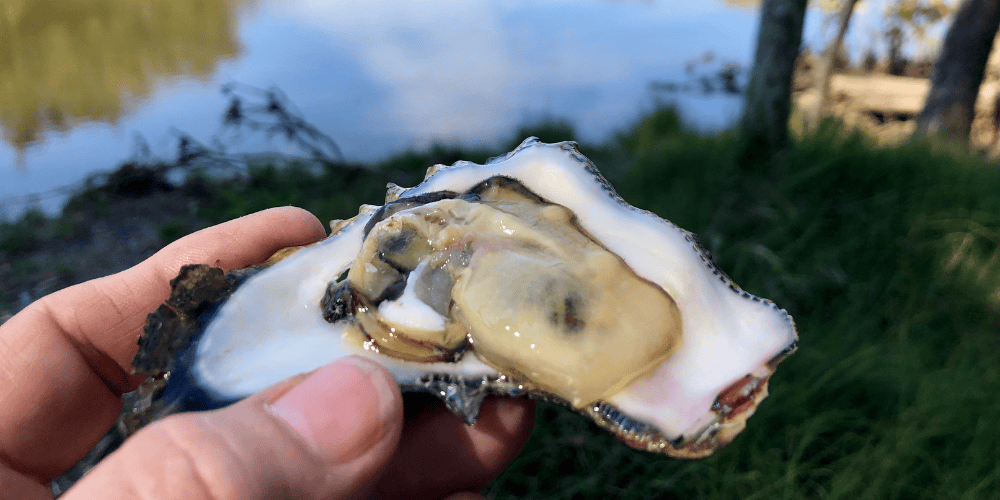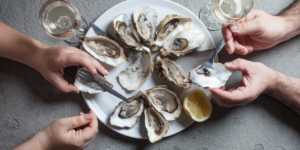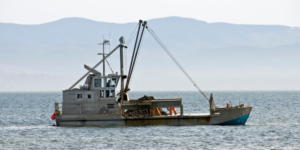Oysters, those briny and succulent bivalves, have a long and storied history deeply intertwined with human civilization. The cultivation and harvesting of oysters have played a vital role in coastal communities around the world, providing sustenance, economic prosperity, and cultural significance.

Today we embark on a journey through time to explore the fascinating history of oyster cultivation and the various techniques employed to harvest these prized delicacies. From ancient practices to modern aquaculture, the evolution of oyster cultivation reveals the ingenuity and resourcefulness of humanity in harnessing the bounties of the sea.
Ancient Oyster Harvesting
The story of oyster cultivation begins in ancient times, where indigenous cultures residing in coastal regions discovered the abundance and nutritional value of these shellfish. Early oyster gathering involved simple methods such as handpicking oysters from intertidal zones or using rudimentary tools like sharpened sticks and primitive nets to gather them from shallow waters. These indigenous communities recognized the importance of sustainable harvesting practices, ensuring the preservation of oyster populations for future generations.
As civilizations advanced, the ancient Romans left a significant mark on oyster cultivation. They developed sophisticated oyster farming techniques, including the construction of purpose-built oyster ponds known as “oyster beds.” These beds provided an optimal environment for oysters to grow, and the Romans meticulously managed them by controlling water flow and salinity levels. Roman engineers even constructed aqueducts to transport seawater to inland oyster farms, further revolutionizing the cultivation and distribution of these prized bivalves.
Oyster Culture in Medieval Europe
During the medieval period, monastic communities in Europe played a pivotal role in oyster cultivation. Monks recognized the value of oysters as a reliable food source and began establishing oyster beds in sheltered coastal areas. These monastic oyster farms employed innovative practices such as controlling tidal flows to create ideal conditions for oyster growth. The monks also implemented sustainable techniques by allowing oysters to mature before harvesting, ensuring the long-term viability of their oyster populations.
Furthermore, oysters became associated with the nobility and royalty of Europe, with exclusive harvesting rights often granted to royal families. Oyster beds were carefully managed, and strict regulations were imposed to preserve the privilege of harvesting these delectable bivalves. Oysters became a symbol of status and luxury, gracing the tables of kings and aristocrats.

Oyster Boom in the United States
The discovery of America brought forth a new era in oyster cultivation. The eastern coast of the United States, particularly the Chesapeake Bay, witnessed a boom in oyster harvesting during colonial times. Native American tribes had long harvested oysters sustainably, but the arrival of European settlers spurred commercial oyster fishing and trade.
Cities like New York became oyster hubs, with oyster carts lining the streets, offering fresh and affordable oysters to the masses. The popularity of oysters soared, leading to the establishment of bustling oyster markets and the emergence of iconic oyster bars. Oysters became a staple in American cuisine, enjoyed raw, cooked, or incorporated into various dishes.
However, the rapid expansion of the oyster industry led to conflicts and challenges. Illegal oyster harvesting, known as oyster piracy, became prevalent, as rival oystermen and pirates sought to exploit the growing demand. This led to clashes with law enforcement and the establishment of regulations to protect oyster populations and ensure sustainable harvesting practices.
Industrialization and Modern Oyster Farming
With the advent of industrialization, oyster farming underwent significant transformations. Oyster aquaculture, or the cultivation of oysters in controlled environments, became more prevalent. The development of techniques such as oyster seed production, spat collection, and the use of oyster beds and racks revolutionized the industry.
Innovations in oyster farming technology continued to emerge, with the introduction of floating bags, which allowed oysters to be grown in suspended systems, optimizing growth and water flow. Oyster tumblers were also implemented, creating tumbling motion that produced uniform shell shapes and meat quality. Moreover, the introduction of triploid oysters, which are sterile and grow faster, increased production efficiency.
Modern oyster farming focuses on sustainability and environmental stewardship. Water quality management and monitoring play a crucial role in ensuring the health and safety of oyster populations. Oyster farms also contribute to habitat restoration efforts, as oyster reefs provide important ecological benefits, such as improving water quality and supporting marine biodiversity.

Cultural Significance of Oysters
Oysters hold a special place in culinary traditions around the world. From the iconic raw oyster consumption to regional delicacies and unique preparations, oysters have captivated the palates of seafood enthusiasts. Oyster festivals and celebrations, such as the famous Oyster Festival in Galway, Ireland, or the Oyster Week in New York City, showcase the cultural heritage and diverse flavors associated with these bivalves. These events bring communities together, fostering a sense of pride and appreciation for oyster culture.
Challenges and Conservation
Despite their popularity and cultural significance, oysters face challenges and conservation concerns. Oyster diseases, such as MSX and Dermo, have had significant impacts on wild and farmed oyster populations. These diseases can decimate oyster beds and pose threats to the sustainability of the industry. Efforts are underway to better understand and manage these diseases through research, monitoring, and the development of disease-resistant oyster strains.
Conservation and restoration initiatives play a vital role in preserving oyster habitats and populations. Oyster reef restoration projects aim to rebuild oyster habitats, enhance water quality, and provide crucial ecological services. The involvement of local communities, scientists, and government agencies in these efforts showcases the importance of protecting and nurturing these vital ecosystems.
The history of oyster cultivation and harvesting is a testament to the deep connection between humans and the sea. From ancient gathering practices to modern oyster farming, the evolution of oyster cultivation reflects our ingenuity, cultural traditions, and environmental stewardship. Oysters have nourished and delighted us for centuries, and their story continues to unfold. As we appreciate the flavors and cultural heritage associated with oysters, let us also embrace the responsibility to preserve these magnificent bivalves and the ecosystems they inhabit for future generations to enjoy.



